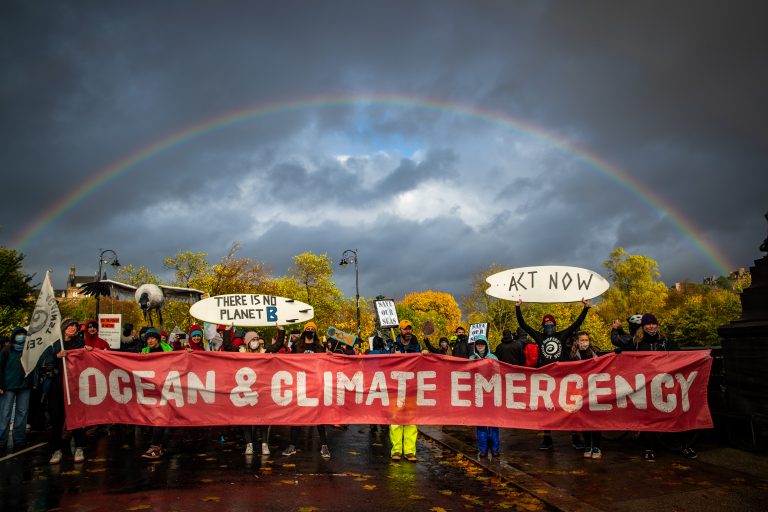

Climate emergency: facts & figures
-
70%
of coral reefs in some regions have been severely bleached

-
200 million
people could be displaced by sea-level rise and extreme weather events by 2100

-
More than 90%
of the excess heat generated by greenhouse gases has been absorbed by the ocean

Climate emergency in numbers
- The ocean creates 50% of the oxygen we need, and absorbs 25% of all carbon dioxide we produce. (UN)
- 93% of excess heat from greenhouse gas emissions since the 1970s has been absorbed by the ocean. (IPCC, 2013)
- More than 90% of the warming that has happened on Earth over the past 50 years has occurred in the ocean. (NOAA, 2020)
- Human-induced climate change has heated the ocean by the equivalent of one atomic bomb explosion per second for the past 150 years. (Global warming of oceans equivalent to an atomic bomb per second | Oceans | The Guardian)
- Mean sea levels reached a new record high around the world in 2021, rising an average of 4.5mm per year between 2013 to 2021. (World Meteorological Organization, 2021)
- A global rise of 2˚C would result in the destruction of 99% of the world’s coral reefs. (UNFCC, 2021)
- Rewilding ‘blue carbon’ ecosystems such as seagrass beds, salt marshes and mangrove forests could absorb 1.83 billion tonnes of carbon dioxide – 5% of the emissions reductions required to avert runaway climate change. (Blue Carbon Report, The Marine Conservation Society and Rewilding Britain, 2021)
Since the Industrial Revolution, human activity has resulted in a huge rise in emissions of greenhouse gases such as carbon dioxide, methane and sulphur dioxide. These gases remain in the Earth’s atmosphere and trap the sun’s heat, resulting in devastating changes including higher temperatures, melting ice sheets and permafrost, rising sea levels, and more extreme and unpredictable weather.
A stable climate is essential to life on Earth. Runaway climate change will result in many areas becoming uninhabitable due to rising sea levels, drought, food shortages, and extreme weather events. It has been estimated that if global average temperatures rise to 2˚C compared to 1.5˚C, 10 million more people will have to migrate due to sea level rise. (Hoegh-Guldberg et al., 2019)
Help confront the ocean and climate emergency


Climate emergency: what we stand for

